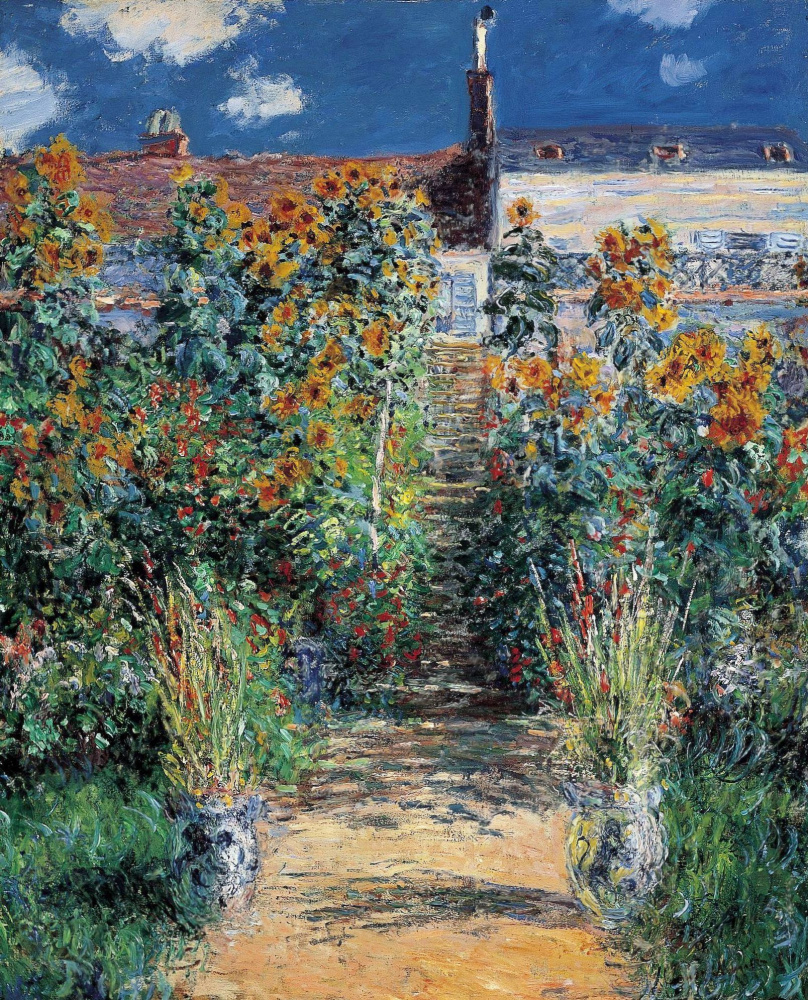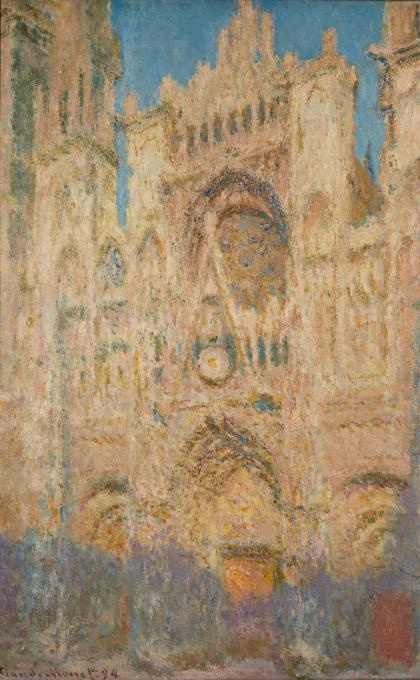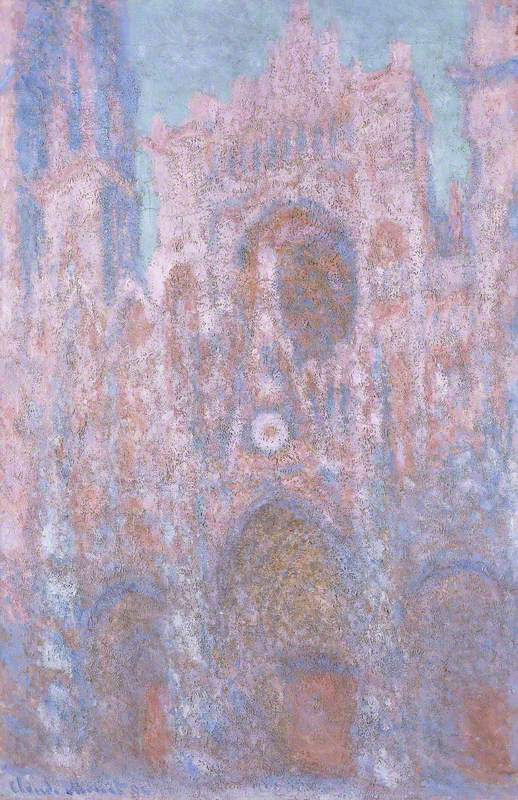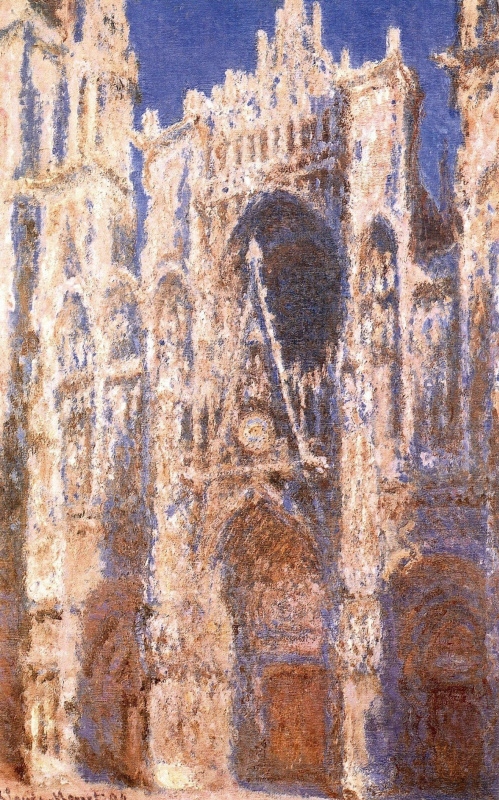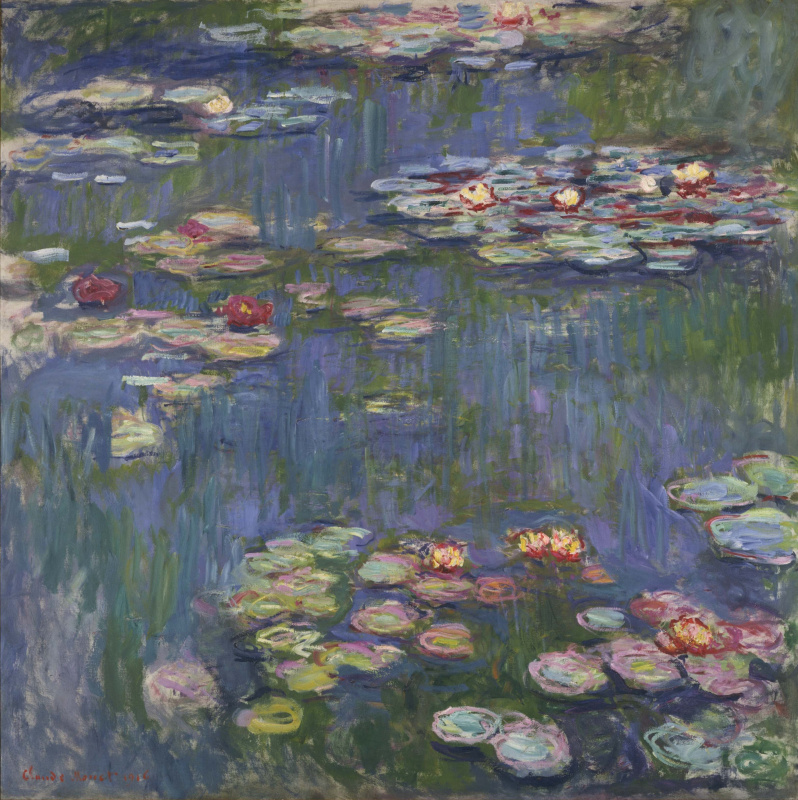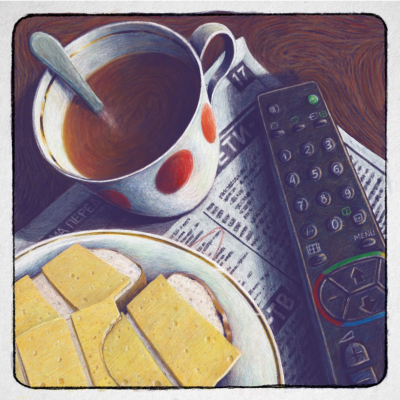Two oil paintings of Claude Monet’s garden in Vetheuil named "Jardin de l’artiste à Vétheuil" have been reunited in Washington for the first time, since they were painted more than a century ago. Both paintings were produced by Monet in 1881, as he focused on the sceneries of the Parisian suburbs.

Monet moved to this village in the Paris suburbs in 1878 with his sickened wife Camille and their two young children as they faced financial difficulties, along with the family of one-time patron Ernest Hoschede.
The period that ensued was one of the most prolific for the French Impressionist, who produced in just three years nearly 300 paintings, including "The Artist’s Garden at Vetheuil" (1881).
The period that ensued was one of the most prolific for the French Impressionist, who produced in just three years nearly 300 paintings, including "The Artist’s Garden at Vetheuil" (1881).
Jardin de l’artiste à Vétheuil
151×121 cm
The National Gallery of Art is presenting two of four known works of this lush summer scene with huge sunflowers, including its own, larger piece and another temporarily on loan from California’s Norton Simon Museum.
One of the paintings was located at the Norton Simon Museum in Los Angeles, while the other was already in D.C. in the Ailsa Mellon Bruce Collection. They can now both be found on the main floor of the West Building, in Gallery 85, until the second painting returns to Los Angeles on August 8.
One of the paintings was located at the Norton Simon Museum in Los Angeles, while the other was already in D.C. in the Ailsa Mellon Bruce Collection. They can now both be found on the main floor of the West Building, in Gallery 85, until the second painting returns to Los Angeles on August 8.
"It's a turning point in terms of his career, his struggles, he’s turning more toward landscape
, he’s becoming more interested in atmospheric effects," National Gallery curator of 19th century French paintings Kimberly Jones said in an interview.
“The Artist’s Garden at Vetheuil”
1881, 100.3×81.3 cm
As part of a series of four paintings, we observe notable differences between the two: "Where Monet layered meridian green thickly on top of cobalt blue to give more interest to the sky in the Norton Simon’s picture, in the companion piece it’s defined instead by contrasts of thick and thin, and patches of exposed canvas ground," as explained by the Agence France Presse.
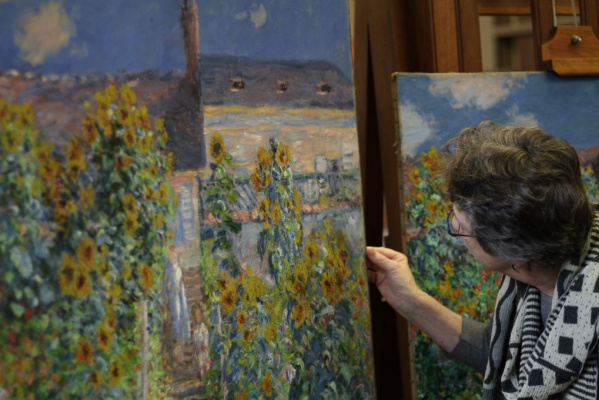
The National Gallery’s senior conservator of paintings Ann Hoenigswald spent months removing a discolored natural resin varnish from the museum’s masterpiece that had flattened the work visually. "What I find really exciting is the energy of the brushwork. You see the richness of the impasto and the speed at which he moves his brush across, and all the bristles of the brush, or a little lip of paint that just comes straggling there."
Left: Ann Hoenigswald, senior conservator of paintings at the National Gallery of Art, looks at "The Artist’s Garden at Vetheuil" (1881) Image by OLIVIA HAMPTON/AFP/Getty Images

Solvents and conservation tools are seen in front of 'The Artist’s Garden at Vetheuil' (1881) by Claude Monet at the National Gallery of Art (AFP/Olivia Hampton)
"Before these two pictures were together, we always described the handling of this one as quite loose because we didn’t have another example, and we had always believed ours was a study for the larger picture," said Norton Simon assistant curator Emily Talbot.

The one on the left is held by the National Gallery of Art, the one on the right by the Norton Simon Museum. Image by OLIVIA HAMPTON/AFP/Getty Images
These two paintings could have highlighted the start of his interest in garden proto-series. It was not until almost 10 years later, in 1890, that Monet began painting formal series each comprised of dozens of works depicting a single subject, as he painted the Rouen Cathedral 26 times, Venice 37 times, or even water lilies 250 times. Monet later become known for his series of works of the same scene, showing it through different seasons and daytimes.
The garden proto-series "could be the germ of an idea that’s just starting to develop in his mind," said Jones.
The garden proto-series "could be the germ of an idea that’s just starting to develop in his mind," said Jones.
Water lilies
1916, 201×200.5 cm
Two sister paintings will be reunited through August 8 for Monet amateurs in the National Gallery of Art in Washington D. C
Based on materials from Artdaily, National Gallery of Art, Washington
Title illustartion: Monet’s sister paintings by Olivia Hampton
Title illustartion: Monet’s sister paintings by Olivia Hampton







